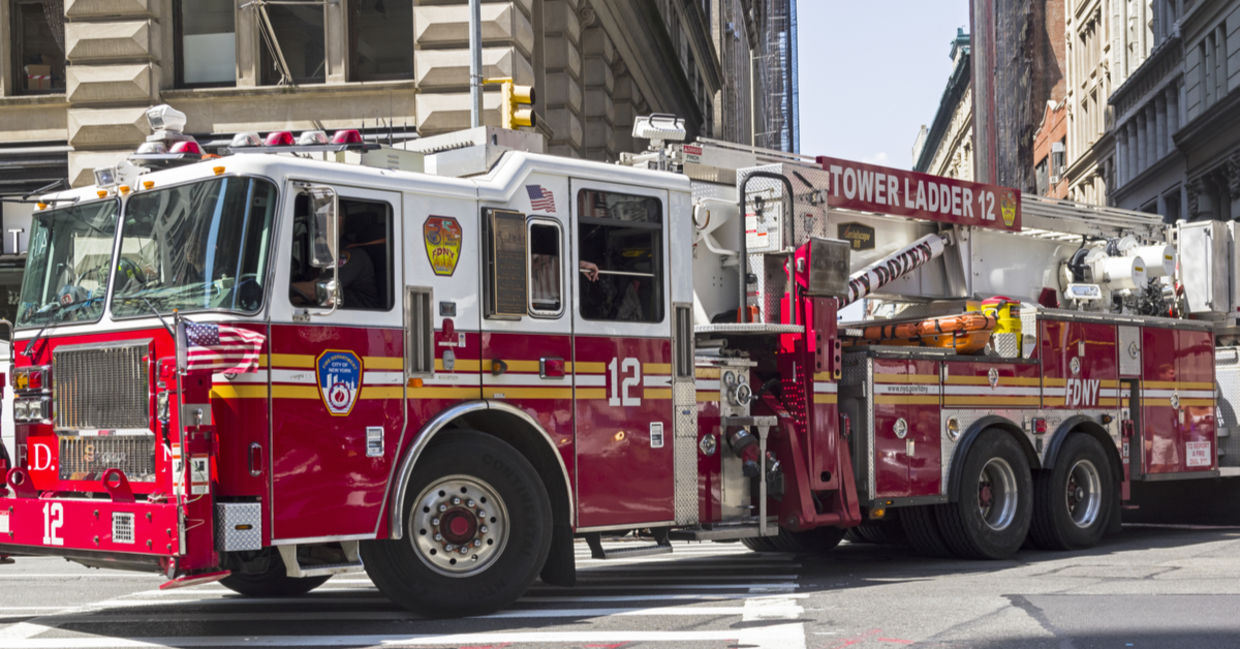
(Sergey Rybin / Shutterstock.com)
Today, improving the quality of life for city dwellers is happening around the globe. From planting trees to lower the heat and cityscapes to help beautify the street to building bicycle lanes, it's all about making our cities better places to live in.
Now, in New York City, an exciting project to tackle pollution and improve public health includes a merger of smart technology and the City’s fleet. In January 2020, the city mayor’s office announced the launch of a pilot project called Cityscanner, which uses publicly-owned vehicles in the Bronx to collect important information regarding local air pollution levels.
According to a press release, vehicles such as police cars, fire trucks, and public buses are mounted with new solar sensor technology developed by the Massachusetts Institute of Technology (MIT) and will register hyperlocal data that can provide pertinent information about where and when air pollution levels are most problematic.
While the city has a fixed sensor monitoring system, mobile sensors have the potential to enhance this by collecting data on a street by street basis and provide breakthrough information.
Air pollution levels in urban spaces can change dramatically depending on where sensors are placed and at what times they pick up data. According to the Environmental Defense Fund (EDF), air pollution levels are extremely dynamic, and can vary by up to eight times on a single city street.
By using the fleet, the pilot program monitors hyper-local and dynamic data that has never been gathered before, and therefore makes much more informed decisions about how to tackle pollutants that can have a significant risk for people with asthma and an increased risk of health issues in seniors.
“New Yorkers’ air quality shouldn’t be determined by zip code,” Mayor Bill de Blasio said in the press release. “We’re piloting technology that can lead us to a greener, cleaner and safer city for all."
The NYC pilot builds on a previous MIT study that used the sensors on garbage trucks in Cambridge Massachusetts, that collected more than 1.6 million data points over a 12-month period. This allowed the city to map hotspots and learn more about the sources of pollution. After the pilot ends, the city will consider adding sensors to more of its fleet.
The financial benefit of the pilot is particularly exciting since it demonstrates scalability and global implementation. By placing monitors on a pre-existing fleet that is already driving around city streets, the project makes use of an essentially free resource that exists in cities throughout the world, and therefore can be replicated.
There have also been similar pilots spearheaded by EDF and the municipal governments in Houston Texas, West Oakland California, and London in the UK.
This is just one example on how cities are combating air pollution and improving the health of their residents. Planting trees and building green walls is one of the most effective ways to do so. The city of Milan is planting three million trees to clean the heavily polluted air.
Artificial green walls called City Tree are also being built by Green City Solutions, a German company that has partnered with numerous cities such as London, Paris, Berlin, and Amsterdam to install these air-purifying green walls in polluted urban areas.
Other cities are banning cars from their city centers or installing giant air-purifying towers to clean the air in India and China. But they need to know where to locate them so that is why sensors are so important.
Data collected from Cityscanner and other mobile monitors can therefore play a major role informing urban planners where to place innovative technologies that can effectively reduce pollution hot spots. By integrating smart data, innovation, and environmental planning, decision-makers and developers can design cities that are healthier, safer, and more sustainable.
YOU MIGHT ALSO LIKE:
Korean Shopping Mall Moonlighting as Environmental Educator!
This Green Wall has the Environmental Benefits of 275 Trees
The BioSolar Leaf Project Could Soon Clean the Air of Major Cities







